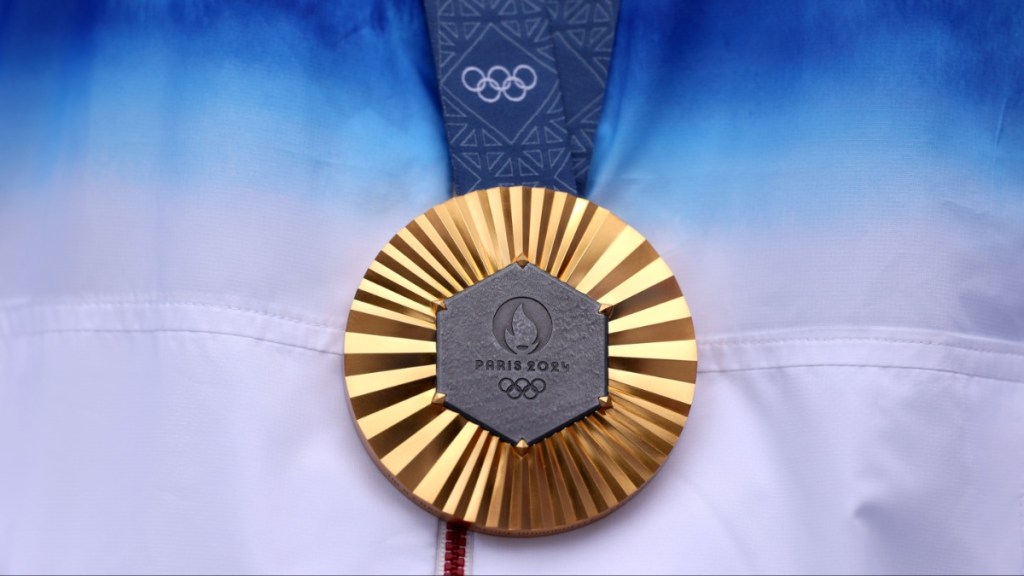Many viewers often wonder what metal makes up the prestigious Olympic gold medals awarded to top athletes. The composition of these medals has evolved over the years, and understanding their current makeup offers fascinating insights into their value and significance.
Here’s everything you need to know about the materials used in crafting Olympic gold medals and the historical changes in their composition.
Are Olympic gold medals made of pure gold?
No, Olympic gold medals do not consist of pure gold. Manufacturers primarily use silver and then coat the medals with a thin layer of pure gold for a prestigious and lasting finish.
The International Olympic Committee (IOC) mandates that gold medals contain at least 92.5% silver and have a plating of at least 6 grams of pure gold. This combination ensures that while the medals appear gold, their core is mostly silver. This practice balances the medal’s prestigious appearance with cost efficiency and durability.
Historically, the 1912 Stockholm Olympics marked the last time the Olympics awarded gold medals made entirely of gold. Since then, manufacturers have changed the composition to reduce costs and ensure durability. Market prices of silver and gold influence the value of these medals. For example, during the 2022 Winter Olympics, the material value of a gold medal was approximately $750, primarily due to the silver content, according to NBC Sports.
Gold medals hold significant sentimental and historical value beyond their material worth. Athletes often view them as priceless symbols of their achievements and dedication. The design and materials used in the medals enhance their unique value and significance. For instance, the Paris 2024 Olympics introduced medals incorporating pieces of the Eiffel Tower, adding historical and cultural significance.
So, while Olympic gold medals do not consist of pure gold, they carry immense value for athletes and symbolize excellence and perseverance.










